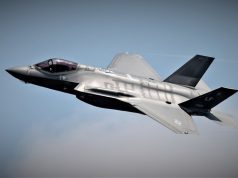The US Air Force Life Cycle Management Center has awarded Lockheed Martin two contracts worth $842.6 million for the production and delivery of Joint Air-to-Surface Standoff Missile-Extended Range (JASSM-ER) missiles and the Long Range Anti-Ship Missile (LRASM).
A $428.4 million contract will see the company deliver 400 JASSM-ER missiles with containers, training and production preparation, tooling and test equipment by 2025.
At over 500 miles, JASSM-ER has roughly double the range of its predecessor – JASSM – which entered service in 2009. JASSM-ER is integrated onto B-1 and B-52 bombers and F-15E, and F-16 fighters. The F-35 stealth fighter will be able to carry the missile externally.
The air force intends to buy 10,000 missiles over the life of the program, including the “extreme range” JASSM-D variant that will employ a new wing design to engage its targets at ranges of over 1,000 nautical miles.
Another contract awarded to Lockheed on February 22 is worth $414 million and covers the delivery of 137 LRASM missiles to the US Navy and Air Force.
According to the company, this is the largest LRASM production contract in the history of the program.
Itself a version of JASSM-ER, LRASM is a precision-guided, anti-ship standoff missile designed to detect and destroy specific targets within groups of ships by employing advanced technologies that reduce dependence on intelligence, surveillance and reconnaissance platforms, network links and GPS navigation in electronic warfare environments.
“This contract reflects LRASM’s increasing significance to our customers’ missions. Focused teamwork around a shared vision with our customers and our dedicated supply partners remains key to this program’s success,” said David Helsel, LRASM director at Lockheed Martin Missiles and Fire Control.
In addition to the US Air Force and Navy, the LRASM will be in use by Australia, which has ordered 200 missiles under a $990 million contract from July 2020.



























